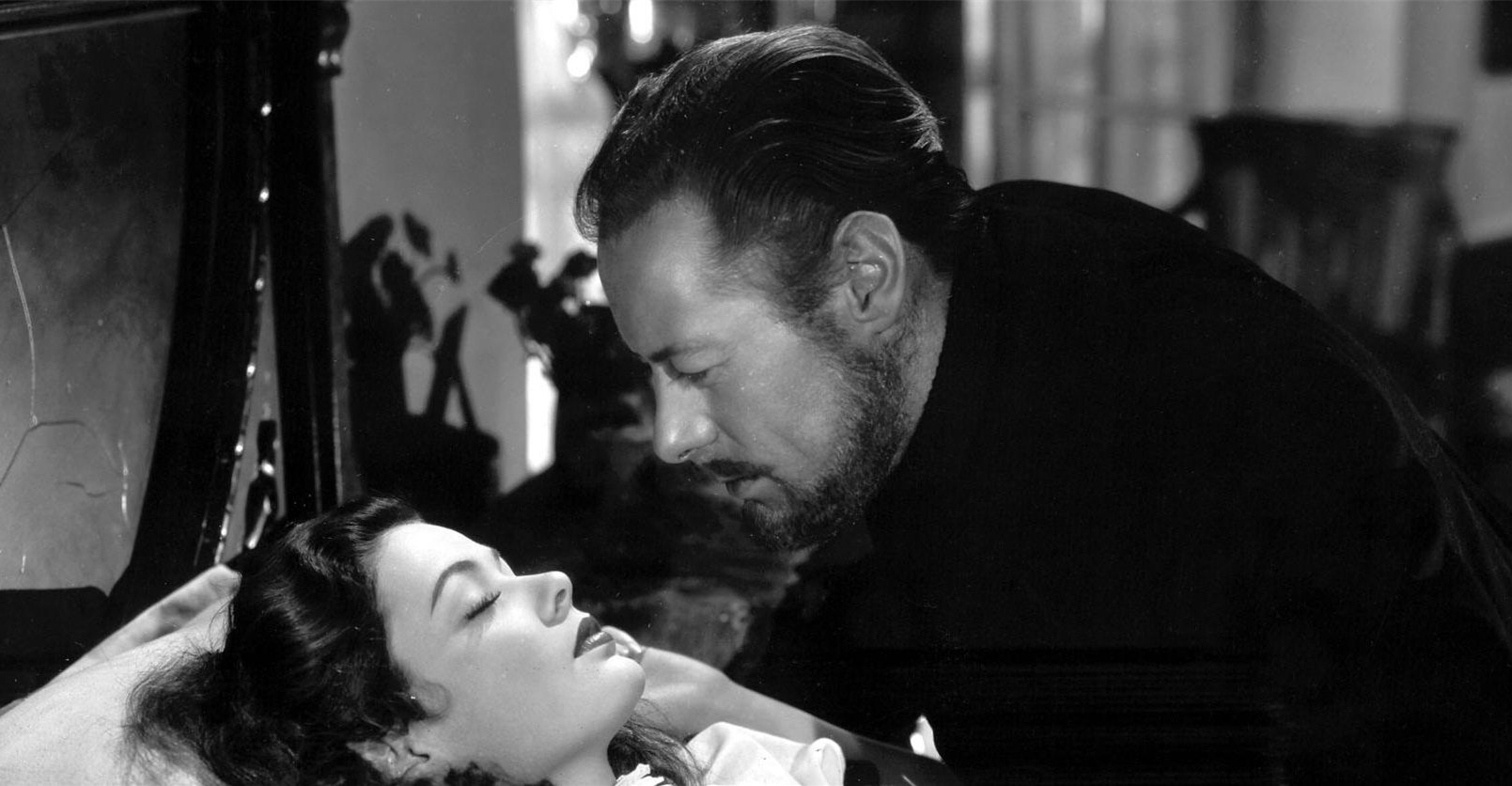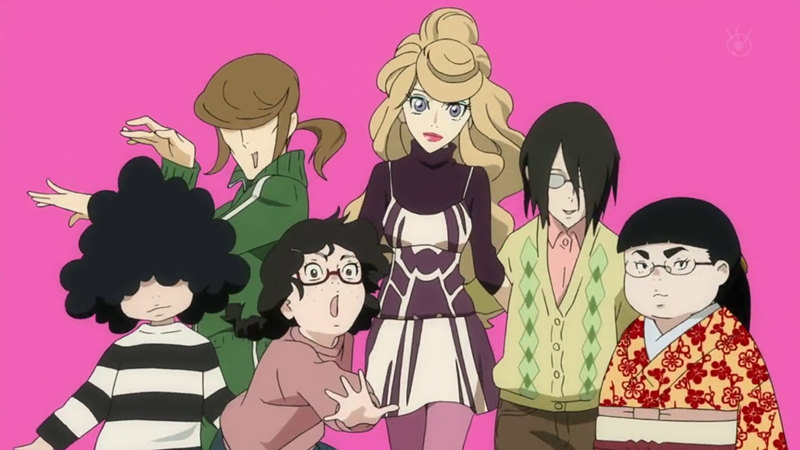I have so little interest in Ang Lee’s second English-language feature “The Ice Storm” (1997) that I don’t even feel like providing an argument as to why I have so little interest in it. The film, written by James Schamus and adapted from the novel by Rick Moody, falls into the sub-genre of “suburban malaise” films that almost invariably bore me to tears. In defense of Lee’s film, it is a far sight better than other offenders of the group such as the loathsome “American Beauty” or the insipid “The Hours.” “The Ice Storm” is glib and over-determined, but it’s not as morally repugnant as Sam Mendes’ Oscar-winning debut, nor does it feature Nicole Kidman with a funny nose.
The one and only aspect of the film that I find interesting is its treatment of comic books and, by extension, the film’s deftly handled opening sequence. After a few exterior shots of an iced-over train, the movie cuts to a close-up of a single panel of a comic book. It is issue 141 of the Fantastic Four, the December issue which (since cover dates of comic books are always later than the actual release date) probably would have been on sale a few months before Thanksgiving 1973, the day when most of the action of “The Ice Storm” takes place. It’s actually a close-up of the very last panel of the issue in which Benjamin Grimm, AKA The Thing proclaims that we have just witnessed “The End of the Fantastic Four!” Starting with the final panel is a sly way of indicating that the opening scene of the film is actually from the end of the narrative.
The camera then tilts up the page to the three panels on the top row where we find out what prompted The Thing’s fateful pronouncement. Interestingly, this is a rare instance when a tilt represents a reversal in chronology. Reed Richards has just zapped his son Franklin with an anti-matter gun in order to prevent the boy’s uncontrolled cosmic power from destroying the universe; in the process, he’s turned little Franklin into a vegetable. Paul (Tobey Maguire), who is reading the book, then lets us know a little more about the events in voice-over. According to him, the Fantastic Four were like a family and that “the more power they had, the more harm they could do to each other without even knowing it.”
During Paul’s voice-over, a slow close-up tracks from left to right and up and down over the top three panels (which is a bit odd considering we’ve just seen Paul close the comic book). This gives the viewer a chance to read every word. In the panels, Reed and Sue (his wife, the Invisible Girl) argue about Franklin.
Panel 1: Reed “I had to do it Sue, he was becoming too powerful. I wish there’d been another way.” Sue: “What- what’s happened to him? What have you done to him, Reed?” Reed: “His mind – I’ve shut down his mind.”
Panel 2: Sue: “Then you’ve turned him into a vegetable. Your own son!” Reed: “Don’t you see, Sue? He was too powerful… if his energy had continued to build, he’d have destroyed the world!” Sue: “But he was your own son, Reed. If you’ve never loved me, you should have loved him. Franklin was your son.”
Panel 3: “Do you think I wanted to do it? I had no choice – there was nothing I could do!”
There’s the movie’s plot writ small. And just in case you missed it, Paul’s voice-over lays out the entire thesis in even more explicit terms.
Filmmakers can get away with murder in opening sequences because viewers are still getting acclimated to the world of the film; they’re still settling in, not yet acting as detective trying to fit all the pieces together. It’s amazing how much information the opening scene of a film can, and often does, convey without spoiling the plot. As heavy-handed as it all sounds when it’s laid down on paper, the fact is that most viewers aren’t going to take the time to read each word even though the shot provides ample time to do so. Paul’s voice-over fades into the past the instant he finishes it, and the story, much like the train, just keeps rolling right along.
For the record, by Fantastic Four 141, Sue had left the team to take care of Franklin full-time. She was replaced on the active roster by Medusa, a tall powerful redhead whose primary power is the ability to use her hair as a living weapon (it works on paper, trust me.) Perhaps it is a coincidence, but Paul’s father (Kevin Kline) has an affair with Janey (Sigourney Weaver), a tall powerful redhead who, as far as I know, does not pummel super-villains with her coiffure, though Janey can flay men alive with her forked tongue. If, in the spirit of Mr. Fantastic, we want to stretch even farther, we could argue that Paul’s mother (Joan Allen) plays an Invisible Girl of her own, at least in her husband’s eyes. Of course in the comic book, Reed and Medusa never had a fling, but the way Marvel keeps rebooting its line, it’s only a matter of time.
One other curious aspect of the film is the number of young actors who have become stars in the ensuing decade. The film features Christina Ricci, Tobey Maguire, Elijah Wood, and Katie Holmes. Ricci was already a star. Both Wood and Maguire had worked in TV and film before but neither was established, and the film marks Holmes’ screen debut.
Video:
The film is presented in its original 1.85:1 wide-screen aspect ratio. The 2008 SD release by Criterion featured a strong SD transfer, and this high-definition rendering represents a modest upgrade. Image detail is a bit sharper throughout though it seems that many scenes have a slightly flat look with foreground images not really standing out from the background as much as might be expected. Color contrast looks more vibrant than on the SD.
Audio:
The DTS-HD Master Audio 2.0 surround track is crisp and rich with a strong sense of depth throughout; the storm really rages. Optional English subtitles support the English audio.
Extras:
Criterion has imported all of the extras from the 2008 SD release, but with the two-discs now combined on a single Blu-ray disc. The extras have been upgraded to HD.
The film is accompanied by a breezy commentary track by Ang Lee and producer-screenwriter James Schamus. The commentary is entertaining and mostly provides evidence of the friendly working relationship between the two.
“Weathering the Ice Storm” is a newly produced documentary (36 min) which features the cast reminiscing about their experiences on the film.
An interview with Rick Moody (21 min) allows the novelist a chance to discuss the film adaptation of his original work.
The disc also includes an interview (32 min) with Lee and Schamus, long-time working partners, recorded in November 2007 at the NYC Museum of the Moving Image. David Schwartz conducts the interview.
Four deleted scenes (7 min. total) are also offered.
The extras collection wraps up with illustrated audio interviews with cinematographer Frederick Elmes (14 min.), production designer Mark Friedberg (14 min.), and costume designer Carol Oditz (8 min.)
The relatively slim insert booklet includes an essay by film critic Bill Krohn. For those who care about minutiae, the SD insert booklet included two panels from Fantastic Four 141; the Blu-ray booklet only has one. Marvel’s big time now, y’know.
Film Value:
Chances are pretty high you’ll like the movie better than I do. If I never see another film about the hypocrisy and corruption of the suburban nuclear family, I’ll be a happy man.
For those who already own the SD release, the Blu-ray is only a modest upgrade in image quality, a bit more in audio, and does not offer any new extras.


